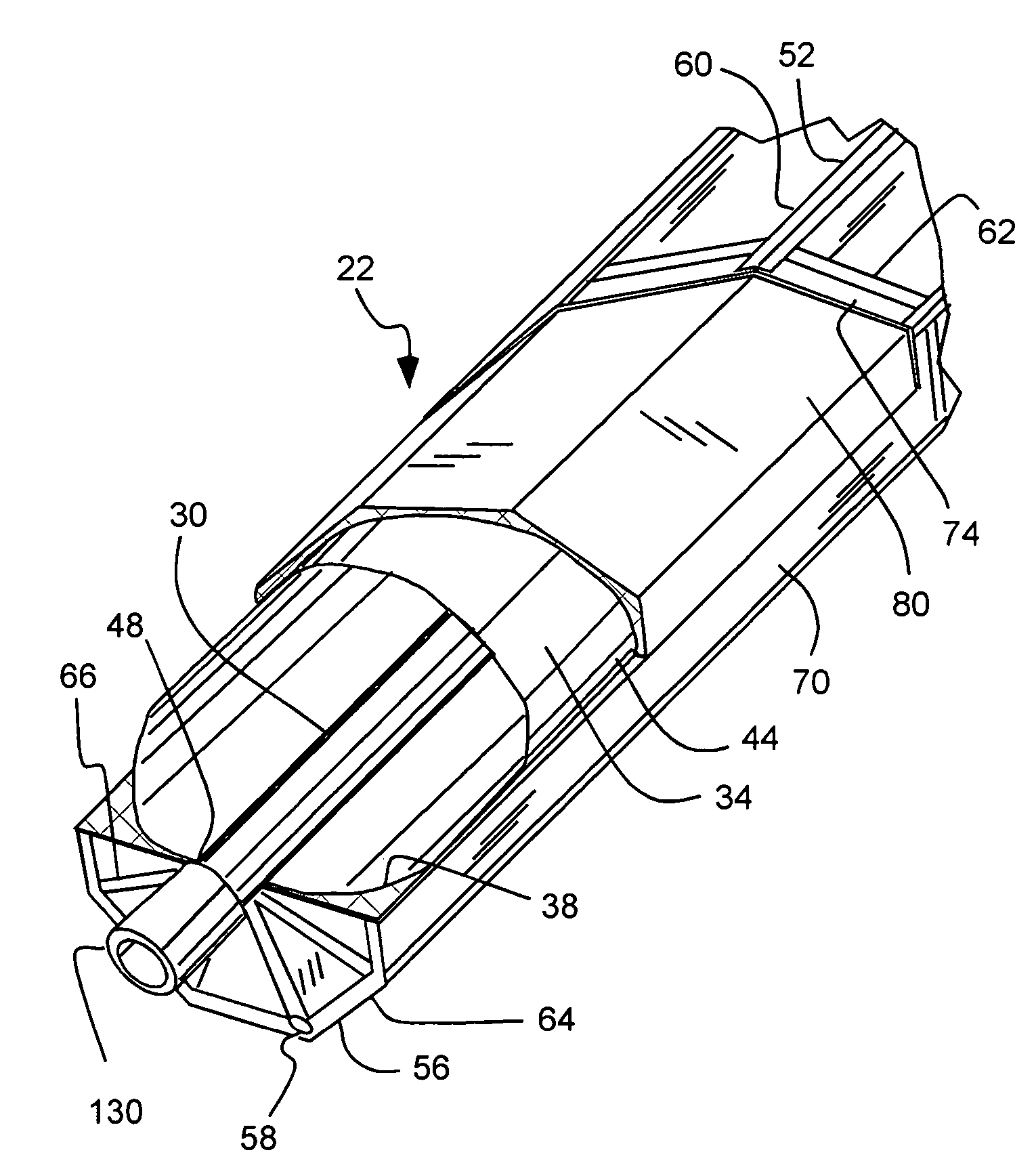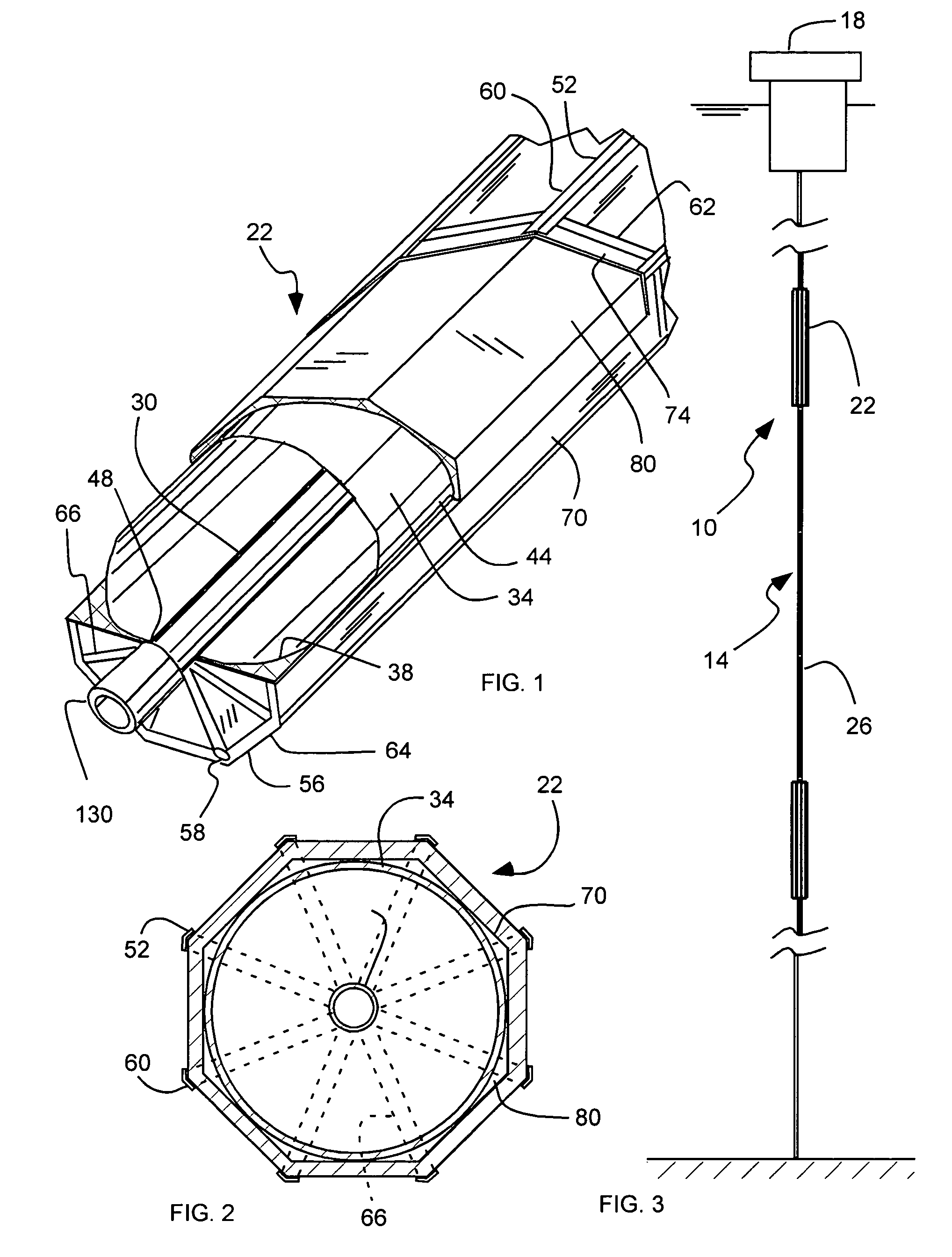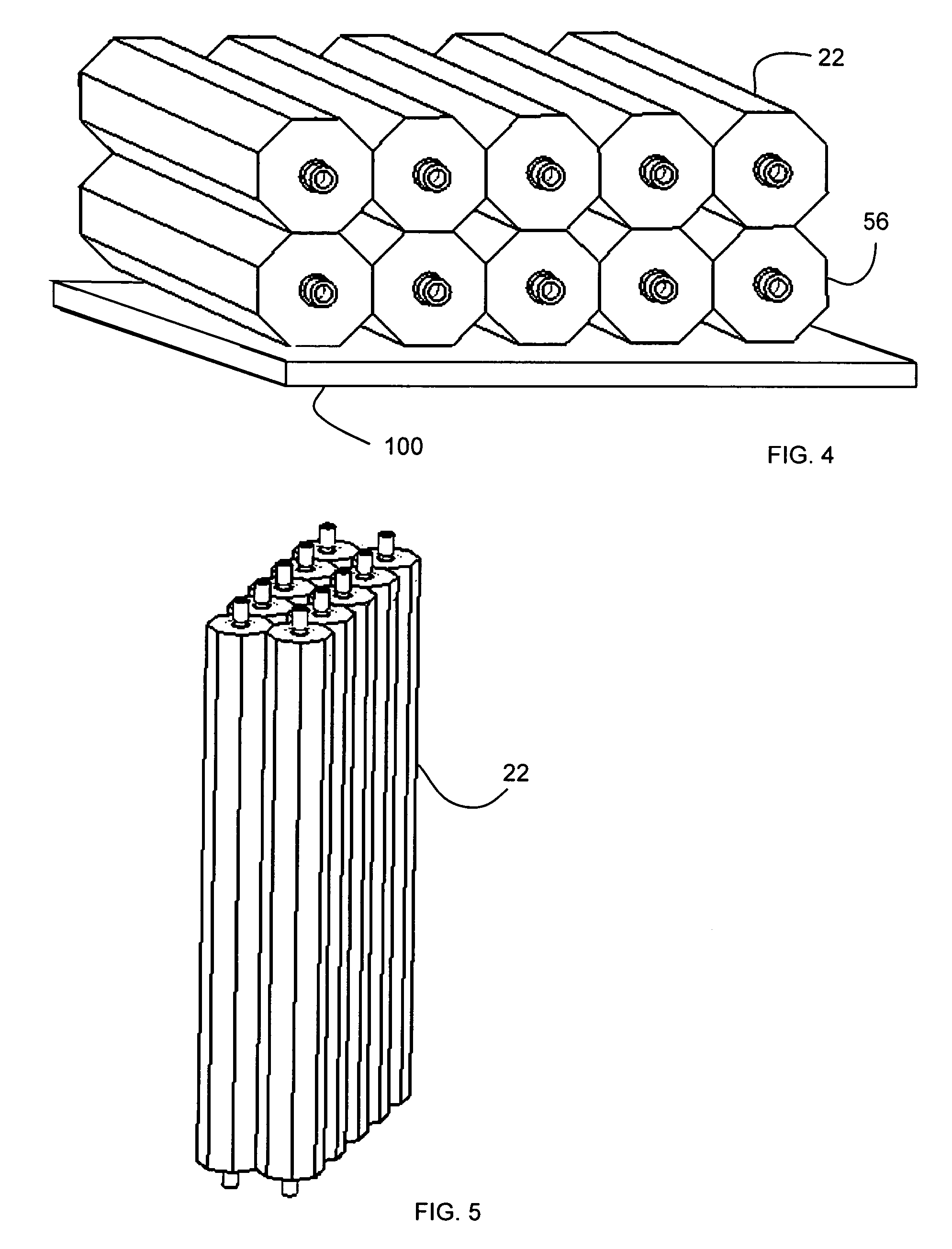Integrated buoyancy joint
a buoyancy joint and integrated technology, applied in the direction of special purpose vessels, seals/packings, borehole/well accessories, etc., can solve the problems of prohibitively expensive stiffening, difficult access, and inconvenient use of conventional offshore oil production methods using a fixed truss type platform, etc., to achieve the effect of improving the buoyancy system, being easy to manufacture, transport and install
- Summary
- Abstract
- Description
- Claims
- Application Information
AI Technical Summary
Benefits of technology
Problems solved by technology
Method used
Image
Examples
Embodiment Construction
[0037]Reference will now be made to the exemplary embodiments illustrated in the drawings, and specific language will be used herein to describe the same. It will nevertheless be understood that no limitation of the scope of the invention is thereby intended. Alterations and further modifications of the inventive features illustrated herein, and additional applications of the principles of the inventions as illustrated herein, which would occur to one skilled in the relevant art and having possession of this disclosure, are to be considered within the scope of the invention.
[0038]As illustrated in FIGS. 1-7, a buoyancy system, indicated generally at 10, in accordance with the present invention is shown for providing buoyancy to a riser system 14 extending from an offshore oil platform 18 to wellheads or control modules on the ocean floor. The system 10 can include a plurality of integrated buoyancy joints (IBJ) 22 that can be coupled in series with a plurality of riser sections 26 a...
PUM
 Login to View More
Login to View More Abstract
Description
Claims
Application Information
 Login to View More
Login to View More - R&D
- Intellectual Property
- Life Sciences
- Materials
- Tech Scout
- Unparalleled Data Quality
- Higher Quality Content
- 60% Fewer Hallucinations
Browse by: Latest US Patents, China's latest patents, Technical Efficacy Thesaurus, Application Domain, Technology Topic, Popular Technical Reports.
© 2025 PatSnap. All rights reserved.Legal|Privacy policy|Modern Slavery Act Transparency Statement|Sitemap|About US| Contact US: help@patsnap.com



